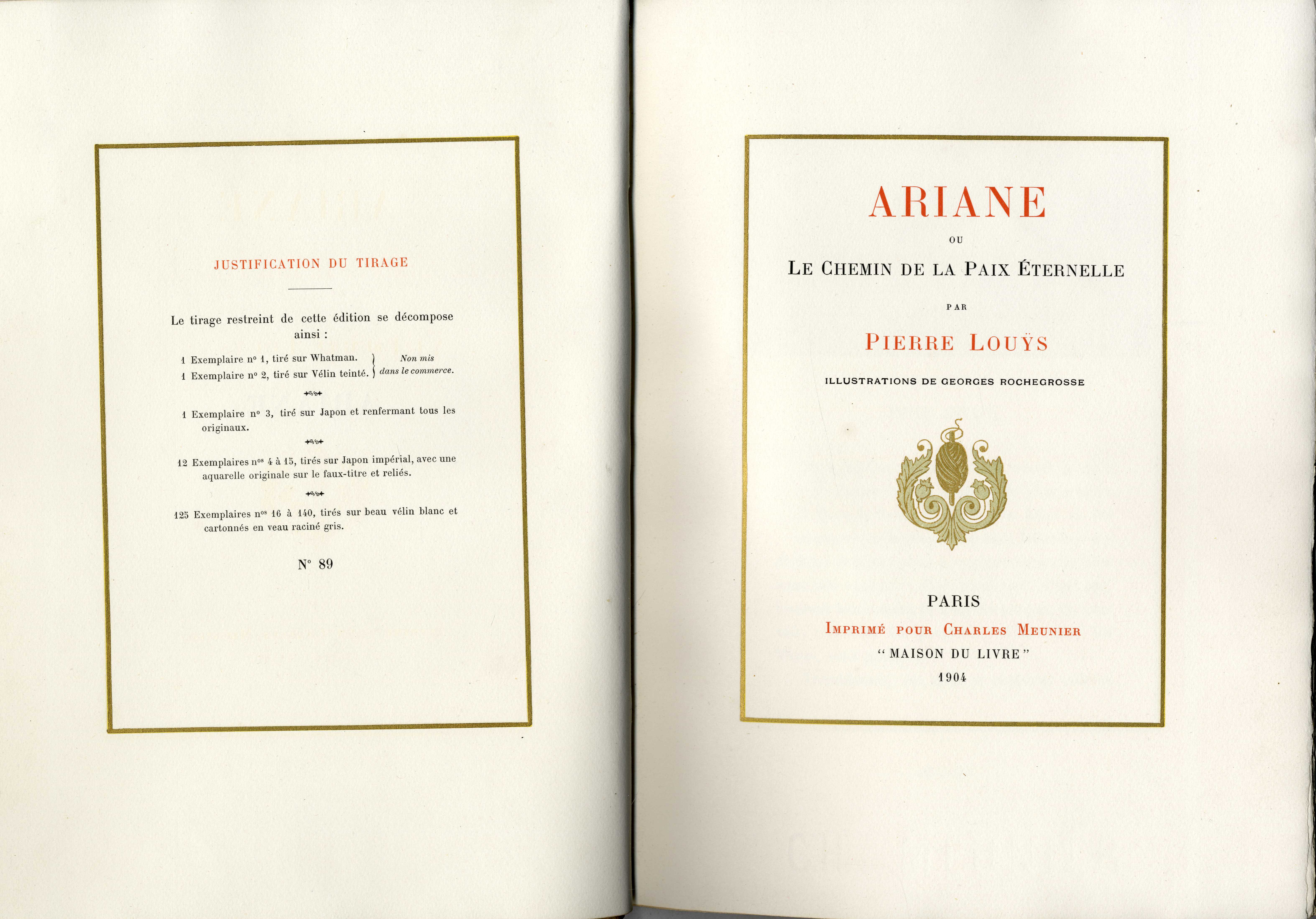La Maison sur le Nil ou Les Apparences de la Vertu + Ariane ou Le Chemin de la Paix Eternelle. TWO VOLUMES.
Louys, Pierre.
Synopsis
Pierre Félix Louis (1870-1925), also known as Pierre Louÿs, was a French poet and author. His pen names were Pierre Louis, Chrysis, Peter Lewys and Pibrac. He founded a literary review, La Conque in 1891, where works not only by Parnassian and symbolist literary role models were published, such as Mallarmé, Moréas, Leconte de Lisle or Verlaine, but also writings by young and still unknown poets such as Valéry, André Gide and Louÿs himself.
His first, small collection of poems, Astarté, appeared in 1891 in l’Art indépendent, followed by “Chrysis ou la cérémonie matinale” in 1893; Poésies de Méléagre, translated in 1893, “Lêda ou la louange des bienheureux ténèbres” in 1893, “La maison sur le Nil ou les Apparences de la Vertu” in 1894, “Scènes de la vie des courtisanes de Lucien de Samosate”, translated in 1894, and the same year “Les Chansons de Bilitis” which was his best-known work and a literary hoax. Effectively, Louÿs passed his own poems off as those of a contemporary of the Greek Sappho (died ca. 570 BCE).








